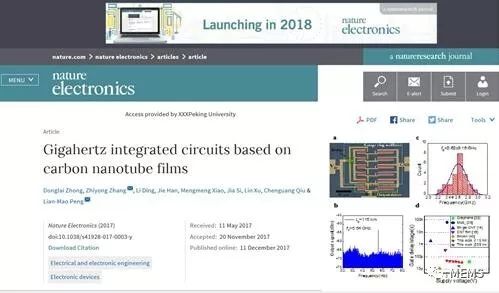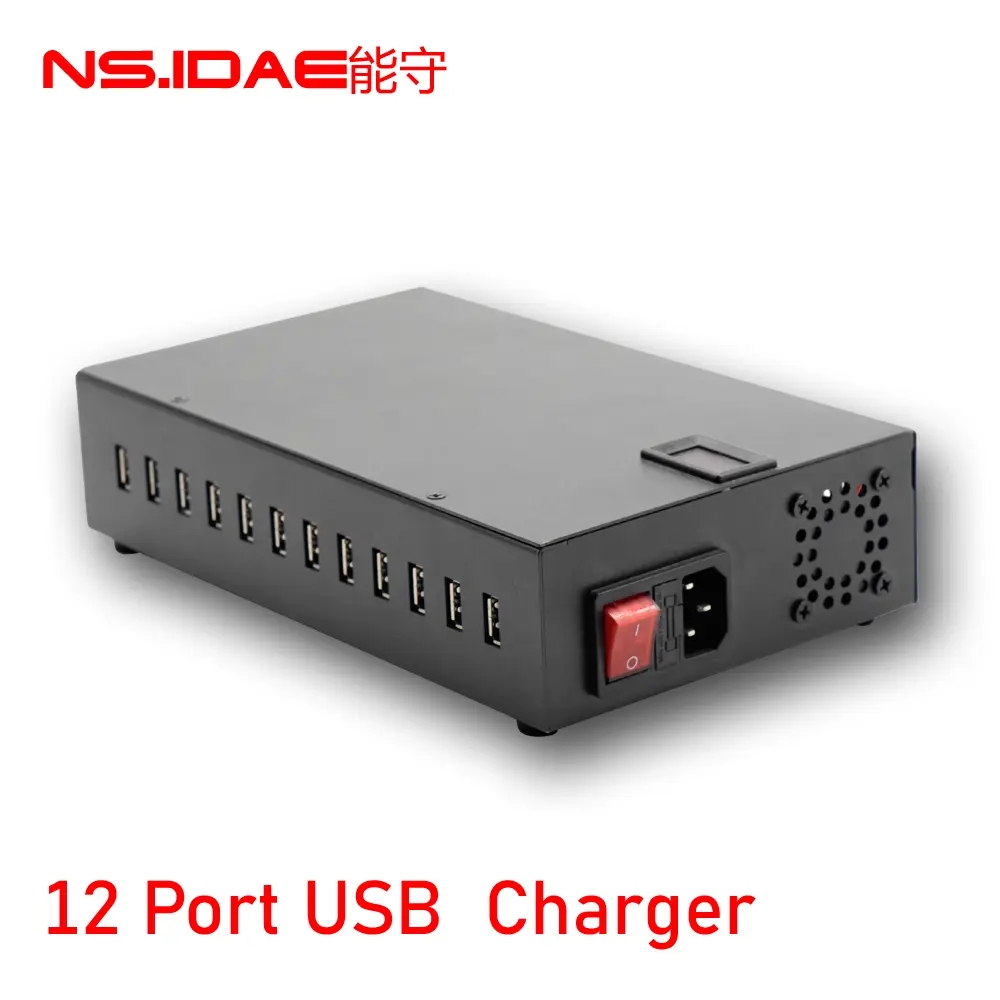IC chips comply with Moore's Law, reducing transistor size, increasing performance and integration, and reducing costs; however, further development is limited by physical limits, power consumption, and manufacturing costs, and new information devices are needed to support future electronics. The development of learning. Carbon nanotubes are considered to be ideal materials for the construction of sub-10 nm transistors; both theoretical and experimental studies have shown that they have 5 to 10 times the intrinsic speed and power consumption advantages compared to silicon-based devices, and the performance is close to that of quantum uncertainty. The limits of the electronic switches determined by the principle are expected to meet the development needs of integrated circuits in the post-Moore era. However, due to the large parasitic effect, the actually prepared carbon tube integrated circuit has a lower operating frequency (generally below megahertz, 1 MHz = 106 Hz), and the operating frequency of the silicon-based complementary metal oxide semiconductor (CMOS) circuit (gigahertz) , ie, Jihz, 1GHz = 103MHz = 109Hz) is several orders of magnitude lower. In the research work of the carbon tube array-based ring oscillator published by International Business Machines (IBM) researchers in August 2017, the oscillation frequency reached 282MHz, which was still far below expectations. Therefore, greatly increasing the operating frequency of carbon nanotube integrated circuits has become an important challenge in the development of carbon nanotube electronics. Professor Peng Lingmao, Key Laboratory of Nanodevice Physics and Chemistry, Department of Information Science and Technology, Peking University - Professor Zhang Zhiyong has devoted himself to research in the field of carbon nanotube electronics for more than a decade, and has developed a complete set of carbon tube CMOS technology, which has been realized in the early stage. Sub-10nm CMOS devices and medium scale integrated circuits. Recently, through the optimization of carbon tube materials, device structure/process and circuit layout, they realized the carbon tube integrated circuit operating at gigahertz frequency for the first time in the world, which strongly promoted the development of carbon nanotube electronics. The team first improved the transconductance and drive current of the carbon nanotube transistor by optimizing the carbon nanotube material, device structure and process. For the transistor with a gate length of 120 nm, the on-state current and the transconductance were respectively achieved at a working voltage of 0.8V. 0.55 mA/μm and 0.46 mS/μm, where the transconductance is the highest value of published carbon nanotube devices. Based on the device with such performance, a five-stage ring oscillator was successfully realized with an oscillation frequency of 680 MHz. Then, the team further optimized the device structure, introducing air sidewalls between the source and drain and the gate to reduce the source-drain parasitic capacitance; while increasing the thickness of the gate resistor to reduce the parasitic resistance, the oscillation frequency reached 2.62GHz. On this basis, the team further increased the five-stage ring oscillation frequency to 5.54GHz by reducing the carbon tube transistor gate length and optimizing the circuit layout, which is almost 20 times higher than the previously published highest record (282MHz); and the 120nm gate length The single-stage gate delay of a carbon tube device is only 18 ps, and the commercial silicon-based CMOS circuit is close to the same technology node without the use of multi-layer interconnection technology. More importantly, the carbon nanotube film used in the technology as the active region material can realize the mass preparation of the high-performance carbon tube ring-vibration circuit, and the circuit yield is 60%, and the average oscillation frequency of the ring vibration is 2.62. At GHz, the difference in characterization is 0.16 GHz, showing good performance uniformity.

The screen of the official website of "Nature·Electronics" and the ring-shaped oscillation circuit of carbon nanotubes described in the paper: (a) scanning electron micrograph of the five-stage ring-vibrating circuit; (b) carbon tube ring-vibrating circuit of 5.54 GHz; (c) ring-vibration frequency Statistical histogram; (d) Single-stage gate delay comparison with other carbon tube materials, two-dimensional materials, and silicon-based ring vibration. On December 11, 2017, the above work was published online in Nature Electronics, entitled "Gigahertz integrated circuits based on carbon nanotube films". DOI: 10.1038/s41928-017-0003-y), will soon be officially published in the journal's inaugural issue, which is the first paper published by Peking University in the journal. Zhong Donglai, a Ph.D. student at the School of Information, was the first author, and Professor Zhang Zhiyong and Professor Peng Lingmao were co-authors. This research work not only greatly promotes the development of carbon nanotube integrated circuits, but also shows that based on the existing carbon tube materials, it is possible to realize integrated circuits with performance comparable to those of commercial monocrystalline silicon-based CMOS through simple processes; Ideal materials (such as high-density carbon tube parallel arrays) and more advanced processing technology are expected to push carbon nanotube technology beyond silicon-based CMOS technology in terms of speed and power consumption. The research was funded by the National Key R&D Program, the National Natural Science Foundation, the Beijing Science and Technology Plan, and the construction of world-class universities (disciplines) and special development guidance.
This 12 port Usb charger has strong compatibility and can support iPad, iPhone, Samsung Huawei, tablet and other devices. At the same time, this type of 12 port mobile phone charger with built-in smart IC chip can automatically provide the best current for your device, which can provide up to 2.4A, increasing the charging speed by 30%.

12 Port Usb Charger,Ipad High Charger,12Port Mobile Phone Chargers,12Port Usb High Power Charger
shenzhen ns-idae technology co.,ltd , https://www.szbestchargers.com